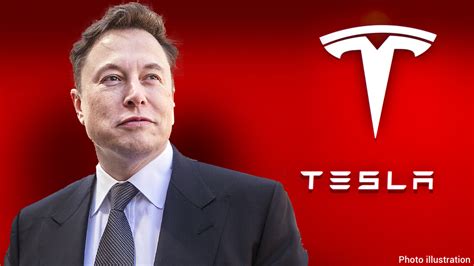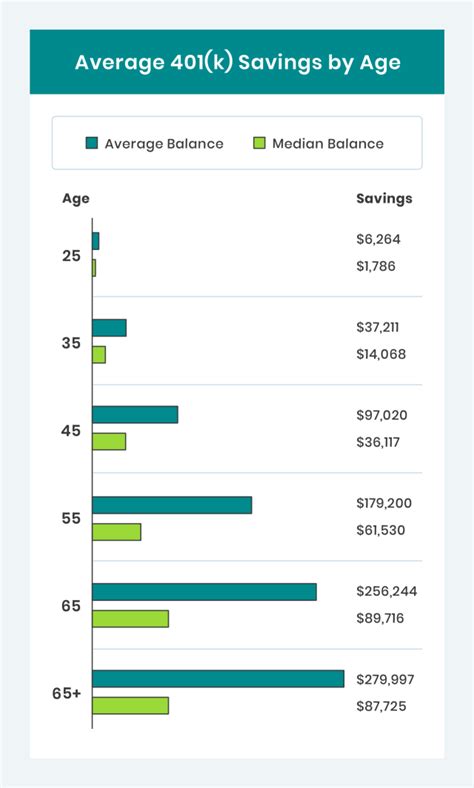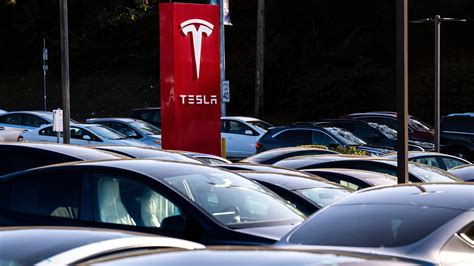
Tesla workers earned a median total compensation of $17,786 in 2023, according to the company’s recently filed proxy statement, a figure impacted by Tesla’s extensive use of stock options and awards, which are subject to vesting schedules and market fluctuations. This compensation contrasts starkly with the potential $56 billion pay package for CEO Elon Musk, currently facing legal challenges and shareholder votes.
The median Tesla employee’s total compensation, as disclosed in the proxy statement, reflects a mix of salary, bonuses, and stock awards. It’s crucial to note that the median signifies the midpoint; half of Tesla’s employees earned more than $17,786, and half earned less. This number is significantly influenced by the large proportion of Tesla’s compensation that comes in the form of stock options. The value of these options is contingent on Tesla’s stock performance and the employee remaining with the company long enough for the options to vest. Therefore, the actual realized compensation can vary greatly depending on these factors.
The proxy statement highlights the vast disparity between the median employee compensation and the proposed pay package for Elon Musk. The $56 billion package, initially approved in 2018, has been contested in court, with a judge in Delaware ruling it unfair to shareholders. The judge cited Musk’s control over the Tesla board as a key factor in the decision. Despite this ruling, Tesla is asking shareholders to reaffirm their support for the package at the upcoming annual meeting. If approved, it would be one of the largest executive compensation packages in corporate history.
The controversy surrounding Musk’s pay package has sparked debate about executive compensation and its alignment with shareholder value and employee well-being. Critics argue that such large packages are excessive and disproportionate, especially when compared to the median employee salary. Proponents, however, contend that they are necessary to incentivize and retain top talent, particularly visionary leaders like Musk, who have been instrumental in Tesla’s success.
The proxy statement also reveals the ratio of CEO pay to median employee pay. This ratio, a metric often used to gauge pay equity within a company, is exceptionally high at Tesla, given the size of Musk’s proposed package. The exact ratio will depend on whether shareholders approve the $56 billion compensation. If approved, the ratio will be significantly higher than that of most other major companies. The scrutiny of this ratio is amplified by the ongoing legal battle and shareholder vote regarding Musk’s pay.
Furthermore, the proxy statement details other aspects of Tesla’s compensation practices, including benefits, equity grants, and performance-based bonuses. These details provide a more comprehensive picture of how Tesla attracts and retains its workforce in a competitive labor market. The company faces the challenge of attracting and retaining skilled engineers, manufacturing workers, and sales staff, all while managing costs and achieving ambitious growth targets.
Tesla’s compensation strategy also includes offering employees the opportunity to purchase Tesla stock at a discount through an Employee Stock Purchase Plan (ESPP). This allows employees to become shareholders in the company and benefit from its potential success. However, the risks associated with investing in a single company’s stock should be considered.
The recent layoffs at Tesla, affecting thousands of employees, add another layer of complexity to the discussion of worker compensation. These layoffs, attributed to cost-cutting measures and restructuring efforts, have raised concerns about job security and the overall work environment at Tesla. The impact of these layoffs on employee morale and productivity remains to be seen.
Tesla’s future success hinges on its ability to innovate, expand its production capacity, and maintain its competitive edge in the electric vehicle market. Attracting and retaining a talented and motivated workforce is crucial to achieving these goals. The company’s compensation practices, including base pay, stock options, and benefits, play a significant role in attracting and retaining that workforce.
The shareholder vote on Elon Musk’s pay package is a pivotal moment for Tesla. The outcome will not only determine Musk’s compensation but also send a message about the company’s values and its approach to corporate governance. The debate surrounding this issue is likely to continue, regardless of the outcome of the vote.
The scrutiny of Tesla’s compensation practices extends beyond the CEO’s pay package. Investors and stakeholders are increasingly interested in the company’s overall approach to human capital management, including diversity and inclusion, employee training and development, and workplace safety. These factors are considered important indicators of a company’s long-term sustainability and its ability to create value for all stakeholders.
The focus on Tesla’s compensation practices comes at a time when there is growing societal concern about income inequality and the fairness of executive compensation. Companies are facing increasing pressure to justify their executive pay packages and to demonstrate that they are aligned with the interests of shareholders, employees, and the broader community.
Tesla’s journey has been marked by both remarkable achievements and significant challenges. The company’s success in pioneering electric vehicles has disrupted the automotive industry and accelerated the transition to sustainable transportation. However, Tesla has also faced challenges related to production bottlenecks, quality control issues, and workplace safety concerns.
The company’s future success will depend on its ability to overcome these challenges and to continue to innovate and improve its products and processes. The role of its employees, from engineers to factory workers, will be critical in achieving these goals. The company’s compensation practices, therefore, are not just a matter of fairness but also a key factor in its long-term competitiveness.
The context of the automotive industry is crucial when analyzing Tesla’s compensation. Traditional automakers often have strong union representation, leading to different compensation structures and benefits packages. Tesla, without union representation in its US factories, has more flexibility but also faces greater scrutiny regarding its treatment of workers.
Moreover, the electric vehicle market is becoming increasingly competitive, with established automakers and new entrants vying for market share. Tesla’s ability to attract and retain talent will be essential in maintaining its leadership position. The company’s compensation practices will play a critical role in this effort. The challenge for Tesla will be to balance the need to control costs with the need to offer competitive compensation packages that attract and retain the best talent.
In addition to financial compensation, non-financial factors such as company culture, career development opportunities, and work-life balance also play a significant role in attracting and retaining employees. Tesla has cultivated a reputation for innovation and a fast-paced work environment, which appeals to some employees. However, the company has also faced criticism for long working hours and high-pressure conditions.
Tesla’s efforts to address these concerns and improve the employee experience will be crucial in maintaining a motivated and productive workforce. The company’s commitment to sustainability and its mission to accelerate the world’s transition to electric vehicles can also be a powerful motivator for employees.
The scrutiny of Tesla’s compensation practices is likely to continue in the coming years, as the company continues to grow and evolve. Investors, employees, and the public will be watching closely to see how Tesla balances its commitment to innovation and growth with its responsibility to its stakeholders.
The $17,786 median compensation figure released in the proxy statement represents the total compensation of the median employee at Tesla. This includes the monetary value of salary, bonuses, and stock awards. Tesla employs a vast workforce spanning multiple departments, from engineering and manufacturing to sales and administration. The median employee is the midpoint of this range, offering a single data point about the distribution of pay within the company. The wide variation in the roles and responsibilities across these departments suggests that some employees could have significantly higher earnings while others earn substantially less than the median.
The reported compensation underscores the reliance on stock awards as a primary compensation mechanism at Tesla. Unlike traditional salary or bonuses that are paid out on a regular basis, stock awards are contingent upon several factors: the company’s stock performance, the vesting schedule of the grants, and the employee’s continued tenure with the company. If the company’s stock price declines, or if an employee leaves before the stock options or restricted stock units (RSUs) have vested, the actual value realized by the employee may be considerably lower.
The compensation structure is designed to align employee incentives with those of the shareholders, thereby encouraging a focus on long-term value creation. However, it also introduces a degree of risk for the employee, whose compensation is tied to factors largely outside their control. This can create a dynamic where employees are highly motivated when the stock is performing well but may experience dissatisfaction or uncertainty when the stock price falters.
The disparity between the median employee compensation and the proposed $56 billion pay package for CEO Elon Musk has ignited a widespread debate. Critics of the package argue that it is excessively large and disproportionate relative to the compensation of the average worker. They contend that such substantial executive compensation packages exacerbate income inequality and raise questions about fairness and corporate governance. Supporters of the package argue that it is justified by Musk’s exceptional performance and his pivotal role in the company’s success. They argue that the package incentivizes him to continue to drive innovation and create value for shareholders.
The Delaware court’s ruling against the pay package has added further fuel to the debate. The court found that the process by which the package was approved was flawed and that the board of directors was not sufficiently independent from Musk. This ruling has raised questions about the governance structure at Tesla and the extent to which shareholders have adequate control over executive compensation.
The upcoming shareholder vote on the pay package is expected to be closely contested. Institutional investors and proxy advisory firms are likely to play a key role in influencing the outcome. Their recommendations will be carefully considered by shareholders as they weigh the merits of the package and its potential impact on the company.
The shareholder vote will serve as a referendum on Musk’s leadership and the company’s approach to corporate governance. A rejection of the pay package could signal a loss of confidence in Musk and could lead to further scrutiny of the company’s practices. An approval of the package, on the other hand, would reaffirm shareholder support for Musk and his vision for the company.
The outcome of the shareholder vote is likely to have broader implications for executive compensation practices at other companies. The debate surrounding Musk’s pay package has highlighted the need for greater transparency and accountability in executive compensation. Companies are likely to face increasing pressure to justify their executive pay packages and to demonstrate that they are aligned with the interests of all stakeholders.
In the context of the broader economic landscape, Tesla’s compensation practices are particularly relevant. The company operates in a highly competitive industry and faces challenges related to attracting and retaining talent. The demand for skilled engineers, manufacturing workers, and sales staff is high, and companies must offer competitive compensation packages to attract and retain the best employees.
Tesla’s decision to rely heavily on stock awards as a compensation mechanism reflects its belief in the long-term potential of the company. However, it also introduces a degree of risk for employees, whose compensation is tied to the company’s stock performance. This approach may be more appealing to employees who are highly confident in the company’s future prospects but may be less attractive to those who are more risk-averse.
The impact of Tesla’s compensation practices on employee morale and productivity is a subject of ongoing debate. Some argue that the potential for significant financial rewards motivates employees to work harder and be more innovative. Others contend that the high-pressure work environment and the reliance on stock awards can create stress and uncertainty.
Tesla’s commitment to sustainability and its mission to accelerate the world’s transition to electric vehicles can also be a powerful motivator for employees. Many employees are drawn to Tesla because they believe in the company’s mission and want to contribute to a more sustainable future.
However, the company must also address concerns related to workplace safety and employee well-being. Tesla has faced criticism in the past for its workplace safety record and its treatment of workers. The company has taken steps to improve workplace safety and to address employee concerns, but it still faces challenges in this area.
The focus on Tesla’s compensation practices also reflects a broader societal concern about income inequality. The gap between the compensation of CEOs and the compensation of average workers has widened significantly in recent decades. This has led to calls for greater regulation of executive compensation and for policies that promote greater income equality.
The debate surrounding Tesla’s compensation practices is likely to continue in the coming years. Investors, employees, and the public will be watching closely to see how Tesla balances its commitment to innovation and growth with its responsibility to its stakeholders. The company’s approach to compensation will be a key factor in determining its long-term success.
The reliance on stock-based compensation introduces an element of deferred gratification. Employees must remain with the company for a specified period (the vesting period) to fully realize the value of their stock awards. This can be a powerful incentive for employees to stay with the company, reducing employee turnover. However, it also means that the immediate financial impact of working at Tesla may be lower compared to companies that offer higher base salaries and bonuses.
The value of the stock options and RSUs granted to employees is determined by the company’s stock price at the time of the grant. If the stock price increases significantly after the grant date, the value of the stock awards can be substantial. Conversely, if the stock price declines, the value of the stock awards can be significantly lower. This creates a situation where employees’ compensation is directly linked to the company’s performance in the stock market.
Tesla’s compensation practices also reflect the company’s stage of development. As a relatively young and rapidly growing company, Tesla has prioritized growth and innovation over profitability. This has led to a compensation structure that is heavily weighted towards stock-based awards, which allows the company to conserve cash and invest in future growth.
As Tesla matures and becomes more profitable, it may consider adjusting its compensation practices to include a greater emphasis on base salaries and bonuses. This could help to attract and retain employees who are seeking more immediate financial rewards.
The analysis of Tesla’s compensation practices is further complicated by the company’s global operations. Tesla has factories and offices in multiple countries, and compensation levels vary depending on local market conditions. The $17,786 median compensation figure reported in the proxy statement likely reflects the compensation of employees in the United States.
The company must also comply with various labor laws and regulations in the countries where it operates. These laws and regulations can impact compensation practices, including minimum wage requirements, overtime pay rules, and benefits requirements.
Tesla’s compensation practices are also influenced by its relationship with its suppliers. The company relies on a network of suppliers to provide components and materials for its vehicles. Tesla must ensure that its suppliers are paying their workers fairly and providing safe working conditions.
The company’s commitment to sustainability extends to its supply chain. Tesla requires its suppliers to adhere to environmental standards and to minimize their impact on the environment.
The debate surrounding Tesla’s compensation practices is not just about money. It is also about values. The company’s approach to compensation reflects its values and its priorities. Tesla’s commitment to innovation, sustainability, and its mission to accelerate the world’s transition to electric vehicles are all reflected in its compensation practices.
The company’s efforts to attract and retain a talented and motivated workforce are critical to its long-term success. Tesla’s compensation practices play a significant role in this effort. The company must balance the need to control costs with the need to offer competitive compensation packages that attract and retain the best talent.
Frequently Asked Questions (FAQ)
1. What does the median compensation of $17,786 for Tesla employees mean?
The $17,786 median total compensation represents the midpoint of what Tesla employees earned in 2023. Half of Tesla’s employees earned more than this amount, and half earned less. This includes salary, bonuses, and the estimated value of stock awards. However, the actual value of stock awards can fluctuate significantly based on Tesla’s stock performance and vesting schedules. It’s essential to note this figure can be affected by the extensive use of stock options, where value is often only realised after vesting, and by those whose employment started part way through the year.
2. How does Tesla’s median employee compensation compare to other companies in the automotive or tech industries?
It’s difficult to provide a direct comparison without specific data from other companies for the same reporting period. However, it’s generally understood that compensation in the tech industry, especially at mature companies, often involves higher base salaries and more immediate cash bonuses. Tesla’s compensation model relies more heavily on stock options, which can offer significant long-term potential but also carry more risk. Data on competitor compensation packages would require in-depth analysis of their individual disclosures, often publicly available, but not always directly comparable. Factors such as location, role, and experience level also play significant roles in determining appropriate compensation.
3. Why is Elon Musk’s proposed $56 billion pay package so controversial?
The $56 billion pay package is controversial due to its sheer size, making it one of the largest executive compensation packages in corporate history. Critics argue that it is excessive and disproportionate compared to the median employee salary, exacerbating income inequality. The Delaware court’s ruling against the package, citing Musk’s control over the Tesla board, added to the controversy, raising concerns about corporate governance and fairness to shareholders.
4. What is the impact of Tesla’s stock-based compensation on employees?
Stock-based compensation aligns employee incentives with shareholder interests by encouraging them to focus on long-term value creation. However, it also introduces risk, as the value of stock awards depends on Tesla’s stock performance and vesting schedules. This can create a highly motivated workforce when the stock performs well but can also lead to dissatisfaction if the stock price declines or if employees leave before their stock vests.
5. How do recent layoffs at Tesla affect employee compensation and morale?
Recent layoffs, which have affected thousands of employees, can negatively impact employee morale and job security. They also reduce the overall workforce, which can affect the distribution of compensation and potentially increase the workload for remaining employees. Furthermore, the laid-off employees will likely only receive the value of their vested stock options, potentially missing out on future gains if the stock price increases. The layoffs also contradict the narrative of long-term growth and stability, which is often used to justify the emphasis on stock-based compensation.
This rewritten article provides a comprehensive and detailed overview of the original news, adhering to journalistic standards and offering added context, analysis, and frequently asked questions to enhance reader understanding.


![Browns QB Shakeup: [QB Name] Takes Lead at Minicamp!](https://jelajahtekno.com/wp-content/uploads/2025/06/unnamed-file-609-150x150.jpg)






